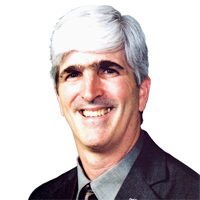Best Practices for Legionella Mitigation – Part One
Julius Ballanco: Struggling to regulate Legionella
Code bodies do not deal in risk management

My first encounter in dealing with combating Legionnaires’ disease through code regulations dates back to 1977. Older individuals will recall that the disease got its name after the outbreak in 1976 in Philadelphia at the American Legion Convention.
One of the first organizations to tackle the issue was ASSE. Concerned that the bacteria were waterborne, ASSE followed their motto, “prevention rather than cure.” ASHRAE also became involved. With the spread of the bacteria appearing to be airborne, ASHRAE began a course to develop guidelines and regulations.
What we know today compared to 1976 is incredible. The amount of research is staggering. However, outbreaks of Legionnaires’ disease still occur throughout the country.
Two documents that are touted as outstanding for combating Legionella are ASHRAE Guideline 12 and ASHRAE 188. If you do not have a copy of these two documents, they are worth obtaining. There is a lot of good information in both.
Getting back to code requirements, neither of these documents is any good for referencing easily in the codes. Guideline 12 is a guideline. It is not a consensus standard. Hence, while an engineer can follow the provisions in Guideline 12, the Plumbing Code, Mechanical Code, and Building Code cannot reference Guideline 12 as a mandatory document. All referenced standards in the codes are consensus documents written in mandatory language.
ASHRAE 188 has a different problem that is given away in the title of the consensus standard, it is a “risk management” standard. Codes do not deal in risk management; they deal in mandatory requirements. Thus, when ASHRAE 188 was proposed to just about every code, the standard was immediately slammed. The general response was, “How do you enforce risk management?”
The first recognition of ASHRAE 188, as well as, ASHRAE Guideline 12 occurred in the 2021 edition of the IAPMO Uniform Plumbing Code. However, the reference is in a note found in an Appendix on Legionella. It was a clever way of providing recognition of these two documents.
Following the introduction of basic Legionella requirements to the Uniform Plumbing Code, IAPMO formed a Legionella Task Group for the Mechanical Code, which I was asked to Chair. The Chair’s job is to develop consensus among a diverse group of individuals. The Mechanical Code Legionella Task Group went much further than the previous Legionella Task Group, adding extensive requirements to the Mechanical Code and modifications to the Plumbing Code appendix. Two new appendices are proposed to the Mechanical Code; one is the overall Legionella requirements, the second is specifically for cooling towers.
The group of Legionella changes proposed by the Task Group received favorable consideration during the proposal stage of the code change process. There were a few Legionella code changes rejected, however. These were the changes that did not receive consensus consideration at the Task Group level, but were still submitted based on the request of the various members. Of course, without Task Group support, it is difficult to gain approval from the full Technical Committee.
Following the publication of the Report on Proposals (ROP), IAPMO received many public comments on the Legionella code changes. Many of the public comments originated from the ASHRAE 188 Committee. If you think that is strange, since the code change references ASHRAE 188 and ASHRAE Guideline 12, it is not. The concern of ASHRAE is that the IAPMO code changes from the Task Group conflict with the ASHRAE documents.
The requirements don’t actually conflict, they are just different. That is not necessarily bad. Since there are many documents published on Legionella, the Task Group used all sources, not just the ASHRAE documents. One difference is in the range of temperatures of Legionella growth. IAPMO code changes are slightly different than ASHRAE on certain temperature ranges. That doesn’t make one document bad and the other good, it just means they are different, but close, in temperatures.
Another issue is that the IAPMO appendices are written in mandatory language so that a jurisdiction can adopt any one or all of the appendices. While ASHRAE deals with risk management, IAPMO deals with mandatory requirements that must be followed (when adopted).
A smaller subcommittee of the Legionella Task Group met to submit public comments to address concerns by ASHRAE. There is a series of comments to the Legionella and cooling tower appendices responding to many of the issues. Not all issues can be addressed because ASHRAE believes in risk management whereas code officials want nothing to do with risk management.
If these code changes are approved and published in the 2024 IAPMO Uniform Plumbing Code and Uniform Mechanical Code, they will impact the plumbing and mechanical engineering profession if adopted by a jurisdiction. A water management plan will become a requirement for commercial buildings. The code changes specify what must be included in the water management plan and requirements that will apply to the plumbing and mechanical system design.
It appears that Legionella will become a very discussed subject at the upcoming IAPMO Technical Committee meetings. The meetings will be held in Anaheim, California the first week of May.
On a sadder note, I was sorry to hear about the passing of my good friend, Tony Scarano. Tony was actively involved in the codes and standards profession for more than 50 years. I first met Tony in 1978 when I testified on the opposing side of one of Tony’s code changes. Tony ate my lunch, but came up to me afterward and said, “I like you kid. You’ll do well in this profession.” That was the kind of guy Tony was, always friendly.
Many of the plastic requirements currently in the Plumbing Code are directly related to Tony’s input. At an IAPMO Plumbing Technical Committee meeting just a few years ago, Tony referred to me again as a young man. I said, “Tony, I’m in my 60s now, I'm not a young man.” Tony’s response was, “I’m 88 and still doing this. You’re still young.”
Tony was 94 when he passed away last month. I was fortunate to know and work with him for more than 40 years. God bless you, Tony.

|
Julius Ballanco, P.E., CPD, F-ASPE, is president of J.B. Engineering and Code Consulting, P.C. in Munster, Ind. |








